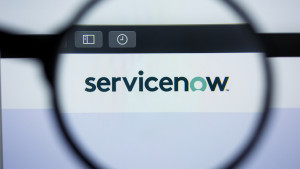- Bearson Smith
- Reading Time: 4 minutes

Cloud vendors are continually working to improve their products in order to make them more valuable to their customers and prospects. These “upgrades” (as the cloud vendors will view them) can often lead to increased spend that is not planned by customers. Not all cloud vendors attempt to force these changes, but unfortunately many do. ServiceNow is one of them.
That great upfront discount that ServiceNow first gave you in order to gain entry may be dwindling in importance as you deal with aggressive uplifts at renewal. Like some larger cloud vendors, ServiceNow is becoming less flexible and more opportunistic in their contracts, in areas such as phased commitments on products and volumes, adding products in-term with negotiated pricing, and renewal protection conditions.
Below are three important changes your organization needs to be aware of as you start to prepare for your upcoming renewal or you consider a new relationship with ServiceNow.
New Product Releases
While new product releases and product re-bundling have been previously covered, they still very much need to be kept at the forefront of any discussion when considering a ServiceNow renewal. As many customers have seen, once ServiceNow has developed new products or added features to more robust editions (like Pro), they also begin phasing out legacy version(s) or less robust versions. This means that during upcoming renewals, customers are effectively pushed towards the more robust versions or re-bundled/renamed products, leading, in most cases, to limited choice and increased spend with ServiceNow.
A few examples of this are ITSA Unlimited as well as the more recent switch from Governance Risk and Compliance (GRC) to Integrated Risk Management (IRM). The change from GRC to IRM, to ServiceNow’s credit, includes updated and additional features that may be valuable to customers. However, for many, this switch can lead to increased spend for the same volume of users if not negotiated properly with ServiceNow.
License Metric Changes
In addition to ServiceNow’s wide range of direct product changes and splits, some modifications are more subtle, especially with adjustments to the metrics by which each product is licensed. One of the biggest issues we are seeing of late is tied to a customer’s ability to allocate licenses based on exact needs. Many of these customers do not need their entire workforce to be fully licensed under any given ServiceNow product (where the product’s license metric requires it). And ServiceNow does not do their customers any favors by not publicly listing a licensing metric guide on their website.
A perfect example of a recent impactful license metric change is what ServiceNow did with IT Business Management (ITBM). ITBM was previously licensed under one product “version” with 3 different license metrics, each with varying list prices (i.e., Planners, Workers, and Analysts; listed as least robust functionality to most robust functionality, respectively). ITBM now has 2 versions (ITBM Standard and ITBM Pro) and is licensed under one metric, ITBM Users.
While this change may not seem like much, ServiceNow has effectively eliminated the flexibility to allow customers to better tailor their needs to the ServiceNow products and solutions available to them and has limited mapping the product to specific requirements and delivering value through proper metrics. This can very easily lead to overspend, especially when customers do not have a grasp on the license metrics and how they have changed. It also makes it incredibly difficult to forecast demand and establish foundational requirements moving forward.
Updated List Pricing
The final piece to the puzzle when dealing with ServiceNow and other cloud vendors is list price modification. Given the fact that ServiceNow is continually working to add functionality and features to their products (whether or not those features are of value to their customers), it is only natural that customers would see changes to list pricing over time. However, ServiceNow neglecting to include list pricing on their public website makes it difficult for customers to have a clear understanding of them.
It is important to remember one key word: transparency. Transparency is vital to any strategic partnership and certainly when negotiating with large cloud vendors. While it is up to each individual organization to analyze the value received from any given product, it is also important that ServiceNow is making meaningful effort to ensure that their customers can make informed decisions when it comes to their internal business needs.
Reducing transparency is also a good thing when trying to establish or maintain strategic partnerships with customers. Given this, it is important for customers to ask for list pricing to ensure there is a reference point for future purchases. List pricing ideally should always be included. It is also important to note that due to the high frequency of changes with ServiceNow’s pricing, this reference point can merely be a means of tracking price changes over time, and it can be used in the negotiation as leverage to demonstrate value received (or lack of value).
It is important that you establish the right expectations during your renewal discussions. If you are a new or perspective ServiceNow customer, it is vital that you achieve the right relationship at the outset, and this means more than just the right starting price and discounting. In both scenarios, it is necessary to not only understand the solutions you are subscribing to, but also to establish long-term protections and flexibility that will allow your enterprise to grow with ServiceNow — rather than being pushed to do so. The more that you can do now to soften the blow of future licensing changes, the better. Moving forward, it is important for organizations to reach out to ServiceNow early and often to avoid surprises at renewal.
Comment below, follow me on Twitter @Bearson_ue and follow UpperEdge on Twitter and LinkedIn. Learn more about our Salesforce Commercial Advisory Services.
Related Blogs
How Your Cloud Commitment Can Impact Your Next ServiceNow Negotiation
Breaking Down the Mystery Behind ServiceNow Now Assist: Understanding Consumption-Based Licensing
SaaS Price Increases: What If Vendors Only Charged More When You Got More?
About the Author
